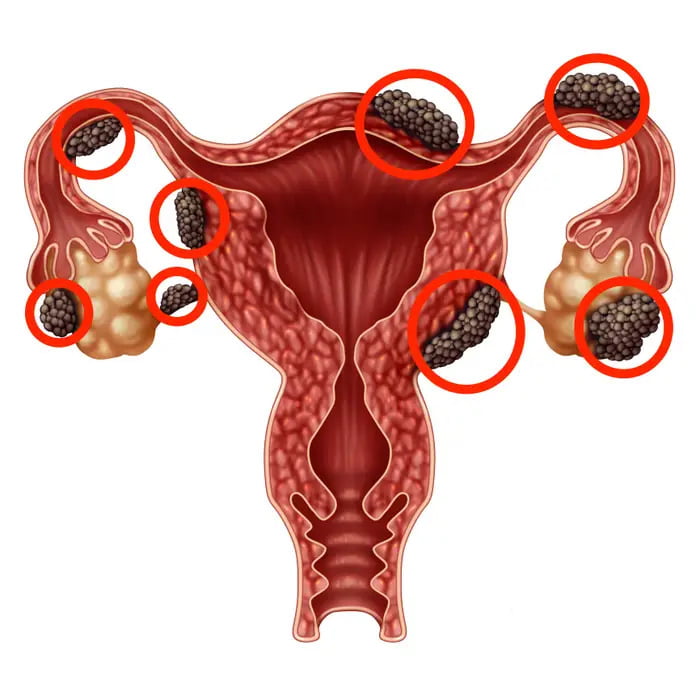Enhancing Pelvic Floor Function and Quality of Life

Endometriosis is a chronic gynecological condition in which tissue similar to the lining of the uterus, known as the endometrium, grows outside the uterus. This condition can cause a range of symptoms and significantly impact pelvic floor functioning. In conjunction with medical management, pelvic physiotherapy offers valuable interventions to manage endometriosis-related pelvic floor dysfunction and improve overall quality of life. This article explores what endometriosis is, how it can affect pelvic floor function, and the role of pelvic physiotherapy in managing the condition.
Understanding Endometriosis and Its Impact on Pelvic Floor Function
Endometriosis is a complex condition that affects millions of women worldwide. The endometrial tissue, which typically lines the uterus, can implant and grow on various pelvic organs such as the ovaries, fallopian tubes, bladder, and rectum. As the tissue responds to hormonal changes throughout the menstrual cycle, it can cause inflammation, scarring, and the formation of adhesions. These processes can profoundly impact pelvic floor functioning in several ways:
- Pelvic Pain: Endometriosis is often associated with chronic pelvic pain, which can be severe and debilitating. The presence of endometrial tissue outside the uterus can lead to irritation, inflammation, and the development of painful adhesions. Persistent pelvic pain can disrupt the normal functioning of the pelvic floor muscles, leading to muscle tension, weakness, and dysfunction.
- Dyspareunia: Many women with endometriosis experience pain during sexual intercourse, known as dyspareunia. The presence of endometrial tissue in the pelvic region can cause pain and discomfort during penetration, leading to involuntary muscle contractions and further exacerbating pelvic floor dysfunction.
- Bladder and Bowel Dysfunction: Endometriosis lesions near the bladder or bowel can result in symptoms such as frequent urination, urgency, painful urination, constipation, or diarrhea. These symptoms can disrupt normal pelvic floor function and contribute to pelvic floor muscle dysfunction.
- Adhesions and Scar Tissue: The formation of adhesions and scar tissue in the pelvic region can cause organs to become adhered or stuck together. These adhesions can limit the mobility and proper functioning of the pelvic floor muscles, leading to altered muscle recruitment patterns and decreased pelvic floor coordination.
The Role of Pelvic Physiotherapy in Managing Endometriosis
Pelvic physiotherapy plays a crucial role in managing endometriosis by addressing pelvic floor dysfunction and associated symptoms. By working in conjunction with medical management, pelvic physiotherapy aims to:
- Alleviate Pelvic Pain: Pelvic physiotherapists employ a variety of techniques to reduce pain and tension in the pelvic floor muscles. Manual therapy techniques, such as myofascial release and trigger point therapy, can help release muscle tension and alleviate pain. Relaxation exercises and breathing techniques are also utilized to promote relaxation and reduce pain sensitivity.
- Improve Pelvic Floor Muscle Function: Pelvic floor muscle dysfunction is common in individuals with endometriosis. Pelvic physiotherapists can provide specific exercises and techniques to address muscle weakness, tightness, and imbalances. Pelvic floor muscle training, biofeedback, and neuromuscular reeducation can improve muscle strength, coordination, and endurance.
- Restore Pelvic Floor Mobility: Adhesions and scar tissue associated with endometriosis can restrict the mobility and proper functioning of the pelvic floor. Pelvic physiotherapists employ gentle manual techniques to release adhesions, improve tissue mobility, and restore optimal pelvic floor movement.
- Address Bowel and Bladder Dysfunction: Pelvic physiotherapy can address bladder and bowel dysfunction associated with endometriosis. Through techniques such as bladder retraining, bowel management strategies, and pelvic floor muscle reeducation, individuals can regain control and improve bladder and bowel function. This can alleviate symptoms such as frequency, urgency, and pain during urination or bowel movements.
- Enhance Overall Quality of Life: Endometriosis can significantly impact an individual's quality of life, affecting physical, emotional, and social well-being. Pelvic physiotherapy takes a holistic approach, addressing not only the physical symptoms but also providing education, support, and guidance to cope with the emotional and psychological impact of the condition. This comprehensive approach can help individuals regain control over their symptoms, improve self-confidence, and enhance overall well-being.
Incorporating Pelvic Physiotherapy into Endometriosis Management
If you have been diagnosed with endometriosis or suspect you may have the condition, it is important to consult a healthcare professional, specifically a pelvic physiotherapist with expertise in managing pelvic floor dysfunction. Here are some essential steps in incorporating pelvic physiotherapy into your endometriosis management:
- Assessment and Individualized Treatment Plan: A pelvic physiotherapist will conduct a thorough assessment to evaluate your pelvic floor function, identify any dysfunctions or imbalances, and understand the impact of endometriosis on your pelvic health. Based on the assessment findings, a personalized treatment plan will be developed to address your specific needs and goals.
- Pelvic Floor Muscle Training: Pelvic floor muscle exercises will be prescribed to strengthen weak muscles, release tension in overactive muscles, and restore balance and coordination. These exercises may include pelvic floor contractions (Kegels), relaxation techniques, and specific exercises to target individual muscle groups.
- Manual Therapy Techniques: Your physiotherapist may use manual therapy techniques to release muscle tension, improve tissue mobility, and address adhesions or scar tissue. These techniques may include myofascial release, trigger point therapy, or gentle stretching exercises.
- Education and Self-Management Strategies: Your physiotherapist will provide education on endometriosis, pelvic floor anatomy, and self-management strategies. This may include guidance on pain management techniques, lifestyle modifications, and strategies to optimize bladder and bowel function.
- Long-Term Maintenance: Pelvic physiotherapy is a collaborative process, and regular sessions may be required to monitor progress, make adjustments to the treatment plan, and provide ongoing support. Your physiotherapist will work with you to develop long-term maintenance strategies to ensure sustainable improvements in pelvic floor function and overall well-being.
Managing endometriosis involves a multidisciplinary approach, and pelvic physiotherapy plays a crucial role in addressing pelvic floor dysfunction and associated symptoms. By targeting pain, improving muscle function, restoring mobility, and enhancing overall quality of life, pelvic physiotherapy provides valuable interventions for individuals with endometriosis. If you are living with endometriosis, consulting a pelvic physiotherapist can help you regain control over your symptoms, improve pelvic floor function, and enhance your overall well-being. Remember, with the right support and management strategies, it is possible to effectively manage endometriosis and enjoy a fulfilling life.


